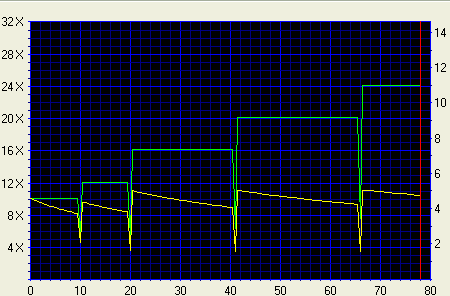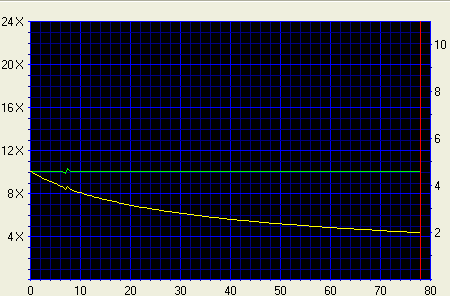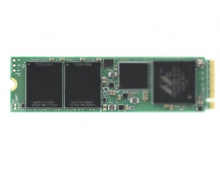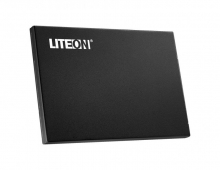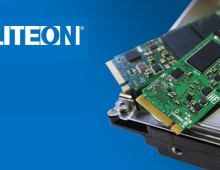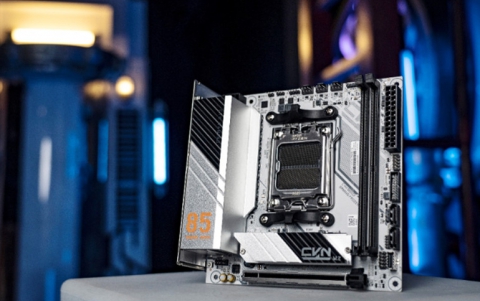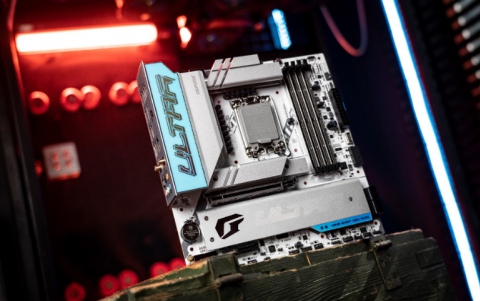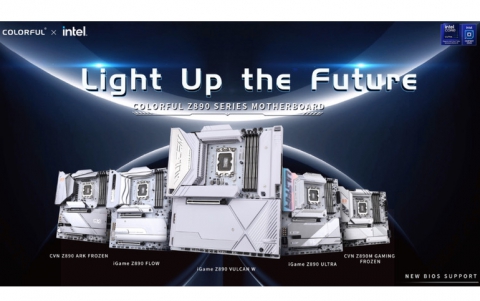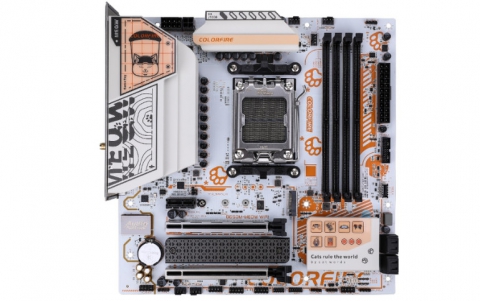LiteOn SDW-431S
8. CD Recording Tests
Review Pages
2. Data CD Reading Tests
3. CD Error Correction Tests
4. DVD reading tests
5. DVD Error Correction Tests
6. Protected Disc Tests
7. DAE Tests
8. CD Recording Tests
9. 3T Jitter Tests
10. C1 / C2 Error Measurements
11. DVD Recording Tests
12. KProbe PI/PO quality tests
13. Bitsetting Tests
14. Conclusion
LiteOn Slimtype SDW-431SX - Page 8
CD Recording Tests
- CD-R Writing Tests
To test the writing speed and writing method of the drive we used a blank 80min CD-R disc from TY and NeroCDSpeed to emulate the writing process.
The above screenshot comes from NeroCDSpeed and shows that the external LiteOn SDW-431S, uses P-CAV writing strategy. The writing process started at 10.01X and finished at 24.05X verifying the manufacturer's specification for 24X writing.
- Recording Times
We created an 80min data compilation with Nero Burning Rom and recorded it on a 700MB disc.

The graph shows different writing times between the drives, something that was expected since each device supports a different maximum recording speed
 |
 |
According to the above graph, at the 24X maximum writing speed for the LiteOn SDW431-S, the Freecom drive's time was about 2minutes faster, This is due to their different writing strategies.
- CD-RW Writing Tests
To test the writing speed and writing method of the drive we used a blank 74min CD-RW disc from TY and NeroCDSpeed to emulate the writing process.
Below we provide a comparison of the three drives where we used Nero Burning Rom software to burn a 651MB data compilation onto 10X US-RW media from TY.

Both the LiteOn and Pioneer drives support 10X maximum re-writing speed and therefore their burning times were about equal. Freecom was faster with 24X maximum re-writing speed.
Review Pages
2. Data CD Reading Tests
3. CD Error Correction Tests
4. DVD reading tests
5. DVD Error Correction Tests
6. Protected Disc Tests
7. DAE Tests
8. CD Recording Tests
9. 3T Jitter Tests
10. C1 / C2 Error Measurements
11. DVD Recording Tests
12. KProbe PI/PO quality tests
13. Bitsetting Tests
14. Conclusion

